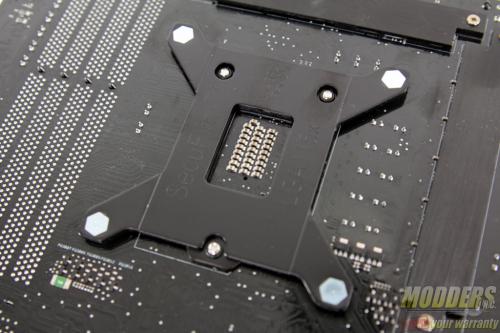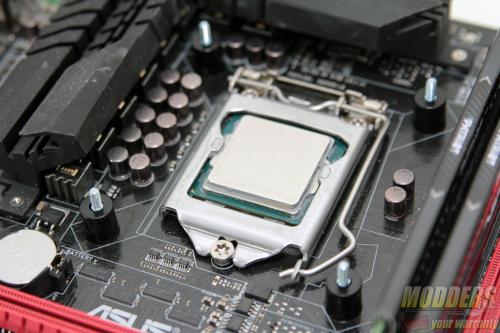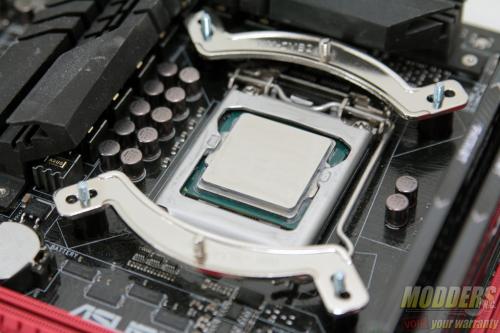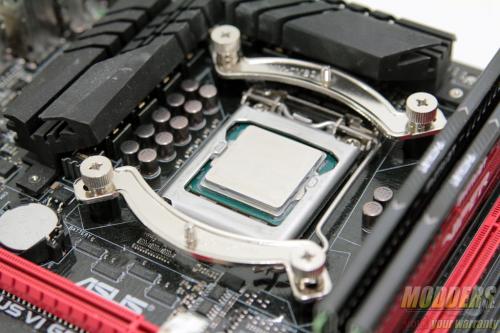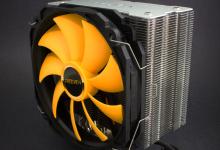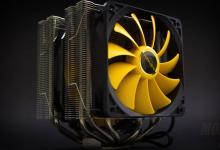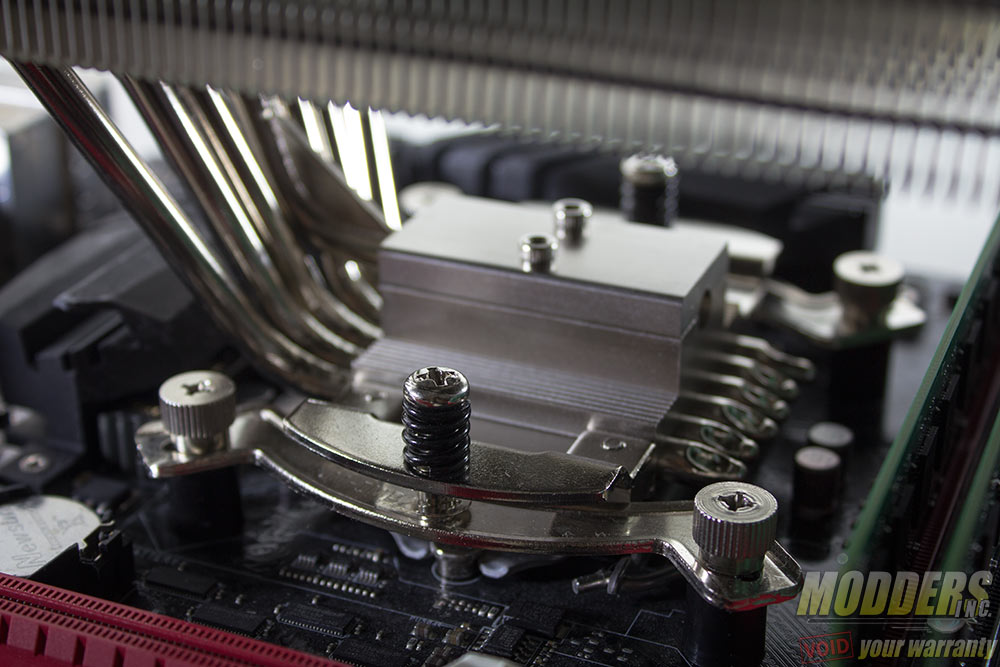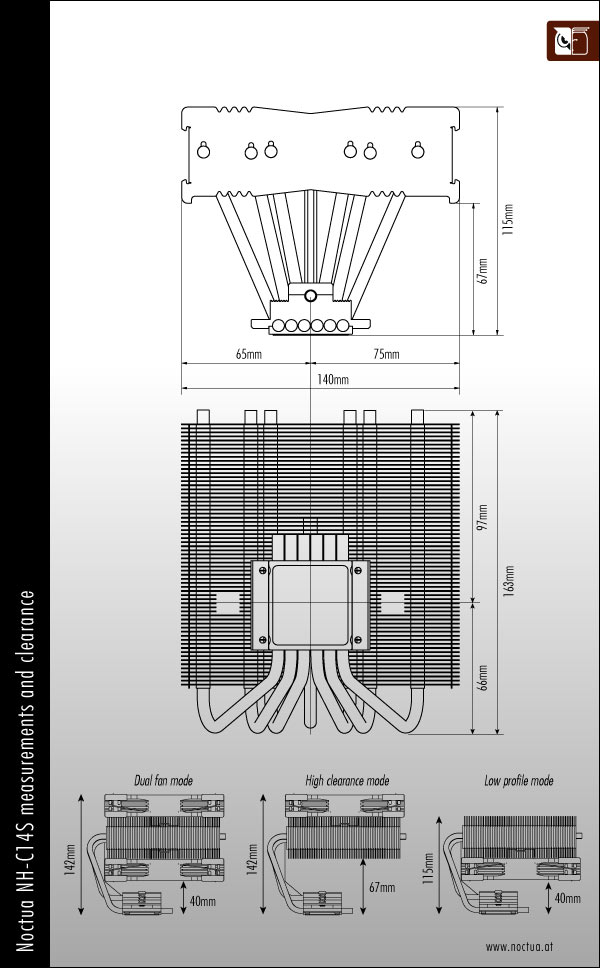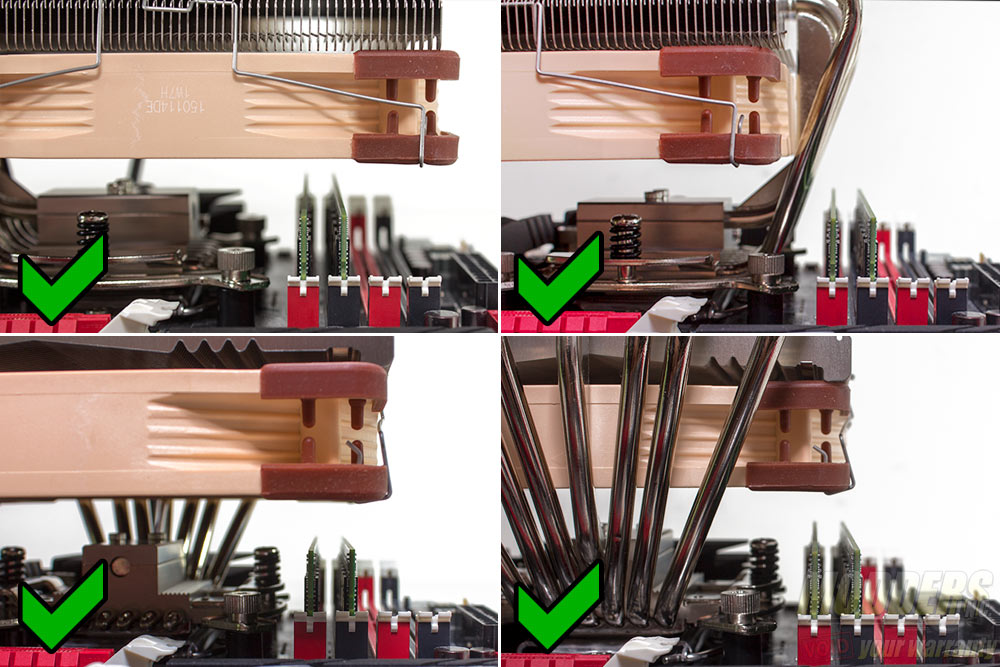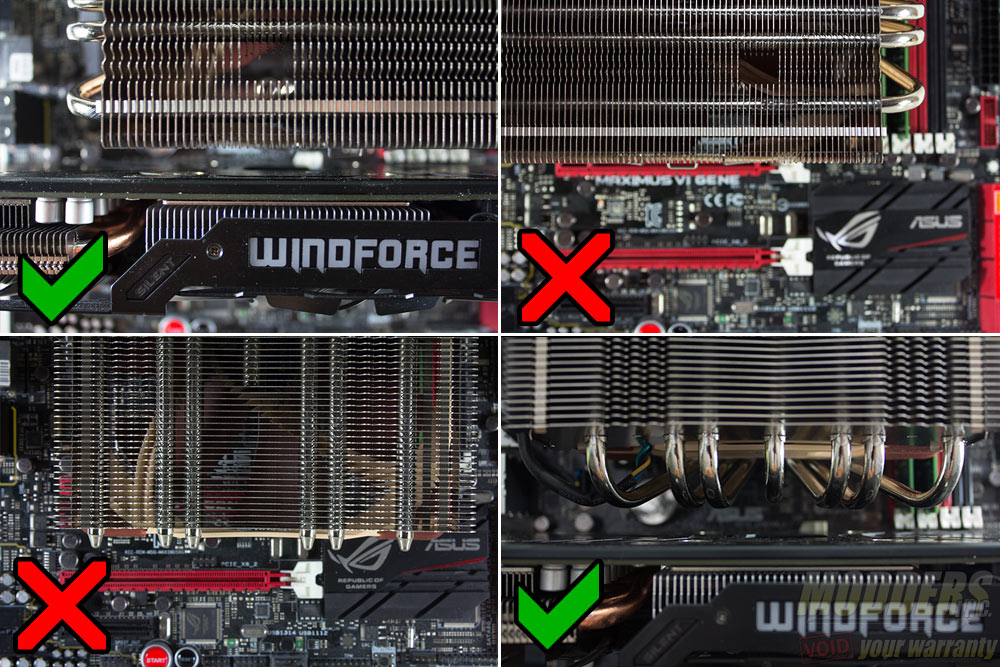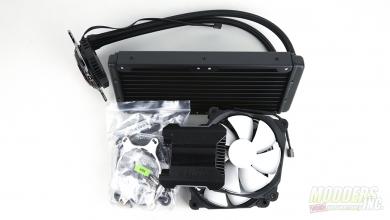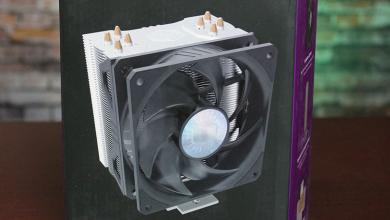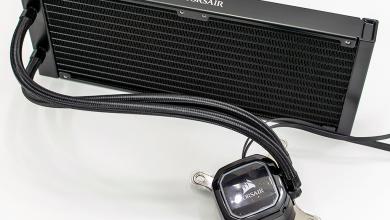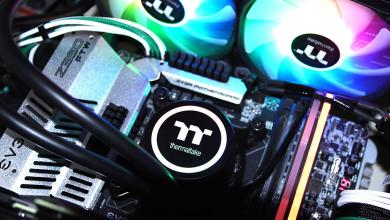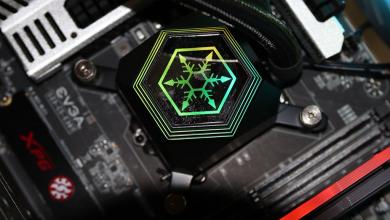Noctua NH-C14S CPU Cooler Review: Balance Through Asymmetry
Installation of the Noctua NH-C14S
AMD installation is universal since the mounting holes remain unchanged for several years now since AM2 all the way to AM3+ and FM2+ except with the new AM1 socket. The motherboard’s backplate is utilized but the plastic brackets and screws have to be removed. Simply place the white plastic spacers on the small protruding piece of the backplate, then place the mounting bars and secure them with the four long screws. It is easy to do with the motherboard outside of the case horizontally, although installing with the motherboard already installed vertically on a case will take a bit of effort as the spacers can fall off. The NH-C14S can only be installed with the heatpipe curve facing the left side or right side on AMD systems.
Installation on Intel LGA2011 motherboards with integrated locking mechanism does not require a backplate or spacers but requires the NM-IB2T bolts to be hand-screwed in place first. Installation on older LGA775 and LGA1366 is not supported out of the box, but mounting kits for these and other possible future socket upgrades are available free of charge from Noctua with a valid proof of purchase (such as a receipt).
Installation on LGA115x first requires the backplate to be positioned through the mounting hole, now made simpler since the posts are integrated into the plate itself unlike in previous generation Noctua coolers such as the NH-D14. The spacers can be placed next with the mounting bar pair going on top to be secured with the four thumbscrews. This last part with the mounting bar is identical to the LGA2011 installation. Make sure to position the mounting bar with the curve facing away from the CPU area. Use the outer holes for LGA2011 mounting and use the middle holes for LGA115x mounting. Unlike the AMD mounting system, users can orient the mounting bars for either horizontal or vertical heatsink mounting since Intel mounting holes are equidistant from each other.
Apply the desired thermal compound quantity then simply align the NH-C14S screws to the mounting bar’s center male protrusion. Looking through the fin array cut-out, carefully drive the screw down on one side only enough to lock it in place before driving the next screw on the other side down so that it is easier to install and also so that even pressure is applied to the contact surface. The last step is re-attaching the fans with the wire clips and plugging in the 4-pin connector to the headers. Make sure to change the settings in the BIOS/UEFI to a lower fan speed alarm setting or to set it to “ignore” completely as Noctua fans run at a very low speed and will trigger the fan speed alarm upon boot-up.
Compatibility and Clearance Issues
The Noctua NH-C14 provides 67mm clearance (measured from CPU contact surface) underneath before the fin array begins (40mm with fan installed). The Mushkin Stealth RAM used in this review measures 31.5mm tall in total from PCB base up to the top of the heatsink (standard bare DDR3 PCB measures 30mm tall). The test system motherboard is an ASUS Maximus VI Gene motherboard with a 28.5mm clearance between the CPU socket and the first DIMM slot and has a 45mm gap between the CPU socket and the topmost PCI-E x16 slot.
RAM Clearance:
PCI-E Clearance:


